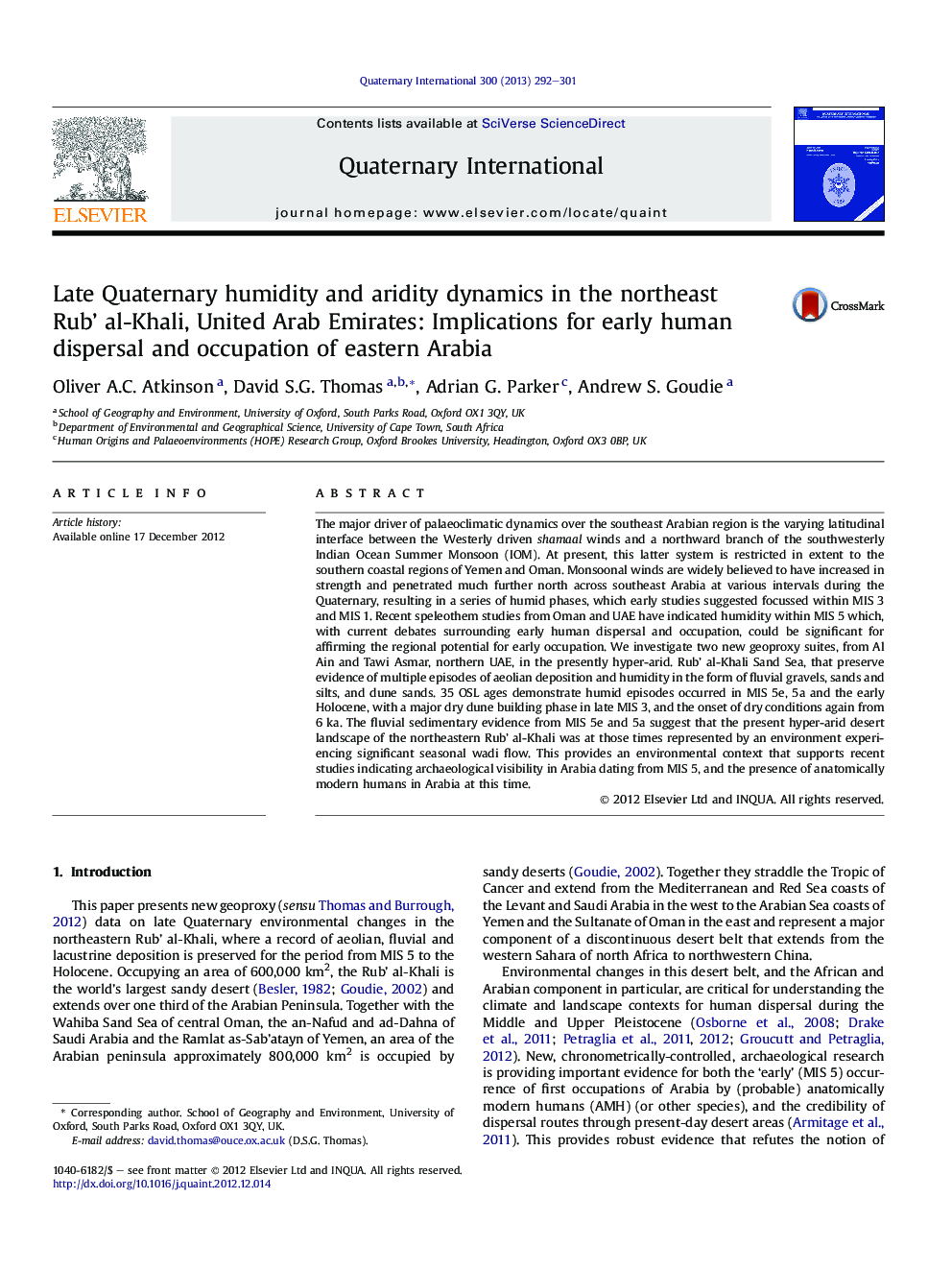| کد مقاله | کد نشریه | سال انتشار | مقاله انگلیسی | نسخه تمام متن |
|---|---|---|---|---|
| 7452701 | 1484189 | 2013 | 10 صفحه PDF | دانلود رایگان |
عنوان انگلیسی مقاله ISI
Late Quaternary humidity and aridity dynamics in the northeast Rub'Â al-Khali, United Arab Emirates: Implications for early human dispersal and occupation of eastern Arabia
ترجمه فارسی عنوان
رعایت اواخر رطوبت کواترنر و پویایی خشکسالی در شمال شرقی روبناء الخلی، امارات متحده عربی: پیامدهای پراکندگی و اشغال زودرس انسانی در عربستان سعودی
دانلود مقاله + سفارش ترجمه
دانلود مقاله ISI انگلیسی
رایگان برای ایرانیان
موضوعات مرتبط
مهندسی و علوم پایه
علوم زمین و سیارات
زمین شناسی
چکیده انگلیسی
The major driver of palaeoclimatic dynamics over the southeast Arabian region is the varying latitudinal interface between the Westerly driven shamaal winds and a northward branch of the southwesterly Indian Ocean Summer Monsoon (IOM). At present, this latter system is restricted in extent to the southern coastal regions of Yemen and Oman. Monsoonal winds are widely believed to have increased in strength and penetrated much further north across southeast Arabia at various intervals during the Quaternary, resulting in a series of humid phases, which early studies suggested focussed within MIS 3 and MIS 1. Recent speleothem studies from Oman and UAE have indicated humidity within MIS 5 which, with current debates surrounding early human dispersal and occupation, could be significant for affirming the regional potential for early occupation. We investigate two new geoproxy suites, from Al Ain and Tawi Asmar, northern UAE, in the presently hyper-arid. Rub' al-Khali Sand Sea, that preserve evidence of multiple episodes of aeolian deposition and humidity in the form of fluvial gravels, sands and silts, and dune sands. 35 OSL ages demonstrate humid episodes occurred in MIS 5e, 5a and the early Holocene, with a major dry dune building phase in late MIS 3, and the onset of dry conditions again from 6Â ka. The fluvial sedimentary evidence from MIS 5e and 5a suggest that the present hyper-arid desert landscape of the northeastern Rub' al-Khali was at those times represented by an environment experiencing significant seasonal wadi flow. This provides an environmental context that supports recent studies indicating archaeological visibility in Arabia dating from MIS 5, and the presence of anatomically modern humans in Arabia at this time.
ناشر
Database: Elsevier - ScienceDirect (ساینس دایرکت)
Journal: Quaternary International - Volume 300, 25 June 2013, Pages 292-301
Journal: Quaternary International - Volume 300, 25 June 2013, Pages 292-301
نویسندگان
Oliver A.C. Atkinson, David S.G. Thomas, Adrian G. Parker, Andrew S. Goudie,
